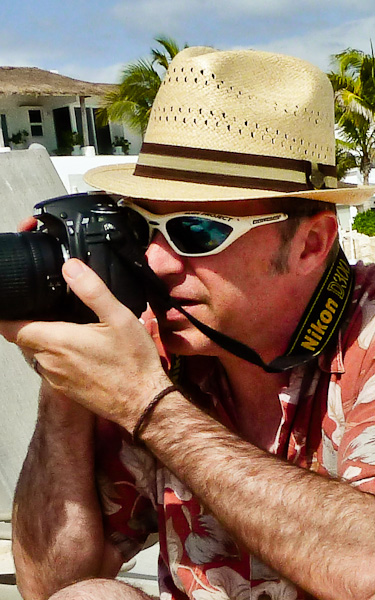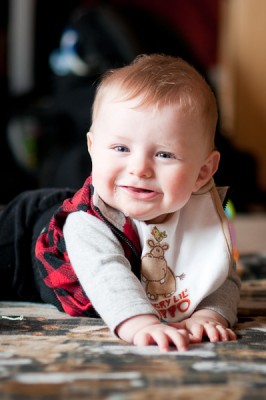It has happened often enough for me to notice a pattern: I am taking pictures of a friend or family member, or of their kids, and I show them what I just captured on the LCD screen on the back of the camera. “Oooh, that’s a great shot; what a nice camera!” or “Wow, it pays to have a good camera,” or “Wow, I need to get a magic camera too.”
I am learning, slowly, to accept these statements as compliments to me despite being directed at my camera, but it is hard sometimes. I am not the first photographer this has happened to. For some reason lay-photographers believe the quality of an image comes from the tool used to produce it, as if Rembrandt or van Gogh had magic paintbrushes. I suppose since most everyone can push a shutter release button and thereby take a picture photography loses some respect as an artistic medium, and that makes me sad. I know people don’t mean to insult my art when they say such things, but it happens.
Yes most people can take a picture, and even a pretty picture. Most people can grow up and learn to cook too, but that doesn’t make them a chef. And I certainly would not give my good friend Chef Drew’s pots and pans credit for the delectable creations he dreams up and places on the table. There is so much that goes into creating a memorable photograph, on purpose, with intention, and the camera helps the photographer create their vision. But the camera is secondary to the image. And the image is not necessarily dependent on the quality of the camera. In fact, some photographers prefer cheap plastic cameras for the aesthetics they help create.
So what is it that good photographers, or perhaps their magic cameras, know that help them create beautiful images? Well, that can take a lifetime for individual photographers to discover but listed below are some things I have learned in my time as a photographer and I think they might help you as well.
- Change your point of view (POV): we all stand basically about the same heightand as a result most images are taken from about 5 feet off the ground, so most images tell us a story from the same perspective. Change it up, get low, get high, tilt your camera at a creative angle. This is especially true when taking pictures of your kids or grandkids. I know some folks where every picture of their children has the poor kiddo looking up, neck craned all the way back, with a grimace of pain and discomfort on their face. Get low, shoot them from their pointof view. You will get a more unique image of them in their natural state, and possibly even a smile.
- Learn a little about how your camera measures the amount of light in a scene. Most of us buy a camera, pull it out of the box, charge the battery, and start snapping away; I know I did. Nowadays I am aware of how the camera actually “sees” the image and, unfortunately or fortunately, it cannot see it the way our eyes do. It just can’t. Our eyes can see details in shadows and in highlights at the same time: they have a “high dynamic range.” The camera cannot. And so, we photographers have to choose where we want the detail: in the shadows or in the highlights? While some might consider this a limitation of camera technology, this inability to correctly render the same scene we are viewing, the photographer uses the restriction to render a representation of what is viewed. Art is the byproduct of such a decision.
- Look to the light! Photographs are all about light! You, with your camera, are capturing light that has quite literally bounced off your subject and through your lens onto your film or sensor. Light is critically important in photography and photographers study it, intensely. I’m sure you know that light has different qualities, right? There is the warm yellow light of sunset, followed by the deep blue light after sunset. There’s hard intense light in the bright midday, and soft light of an overcast day. None of these is better or worse than the other, they will just create different moods and photographers use the light to create the moods they want. What mood do you want?
- Learn a little about aesthetics of making photographic images. Intentional blur or limited depth of field (basically determining what is intentionally in, and out, of focus) go a long way toward creating mood in an image and, interestingly, this is generally what moves us about an image: the mood. Images are a visual language and, although we can explain why an image is interesting to us, we are generally moved emotionally by an image first. Photographers tend to pay attention to the emotions and moods they are invoking. By the way, intentionally slow shutter speeds create blurs, and large apertures (small f-stop numbers) create shallow depths of fields with more out of focus regions in the frame.
- Practice! I realize you may not have an interest in becoming an entrenched hobbyist photographer, but if your goal is to take some good images of your family (read: kids! pets!) and the wonderful vacations you take, you have chosen some of the most difficult subject matter to photograph. I know. I have two little ones and I am repeatedly surprised by how rapid they are, as well as how impatient, impulsive, and occasionally obstinate. Getting them to understand how important their cooperation is to creating that yearly calendar or Holiday card is no easy feat. I stand a much better chance of snagging a few good images if I have practiced and practiced and practiced.
- Read up! There are many wonderful books available to learn more about photography but some of the best are the most simple. I learned the most from a series of ebooks created by World and Humanitarian Photographer, best selling author, and teacher David duChemin over at Craft and Vision. I particularly found “Ten”, “Ten More”, and “Drawing The Eye” extremely useful.
There, phew(!), that was a long one. I hope you’ve enjoyed my humble suggestions as well my encouragement to join me in capturing more of this beautiful world on film or in bits and bytes. I’ve come to love photography over the past few years and I hope you do to. In the meantime, while you and I both practice, I will also try to come to terms with my magic camera receiving all the credit.




